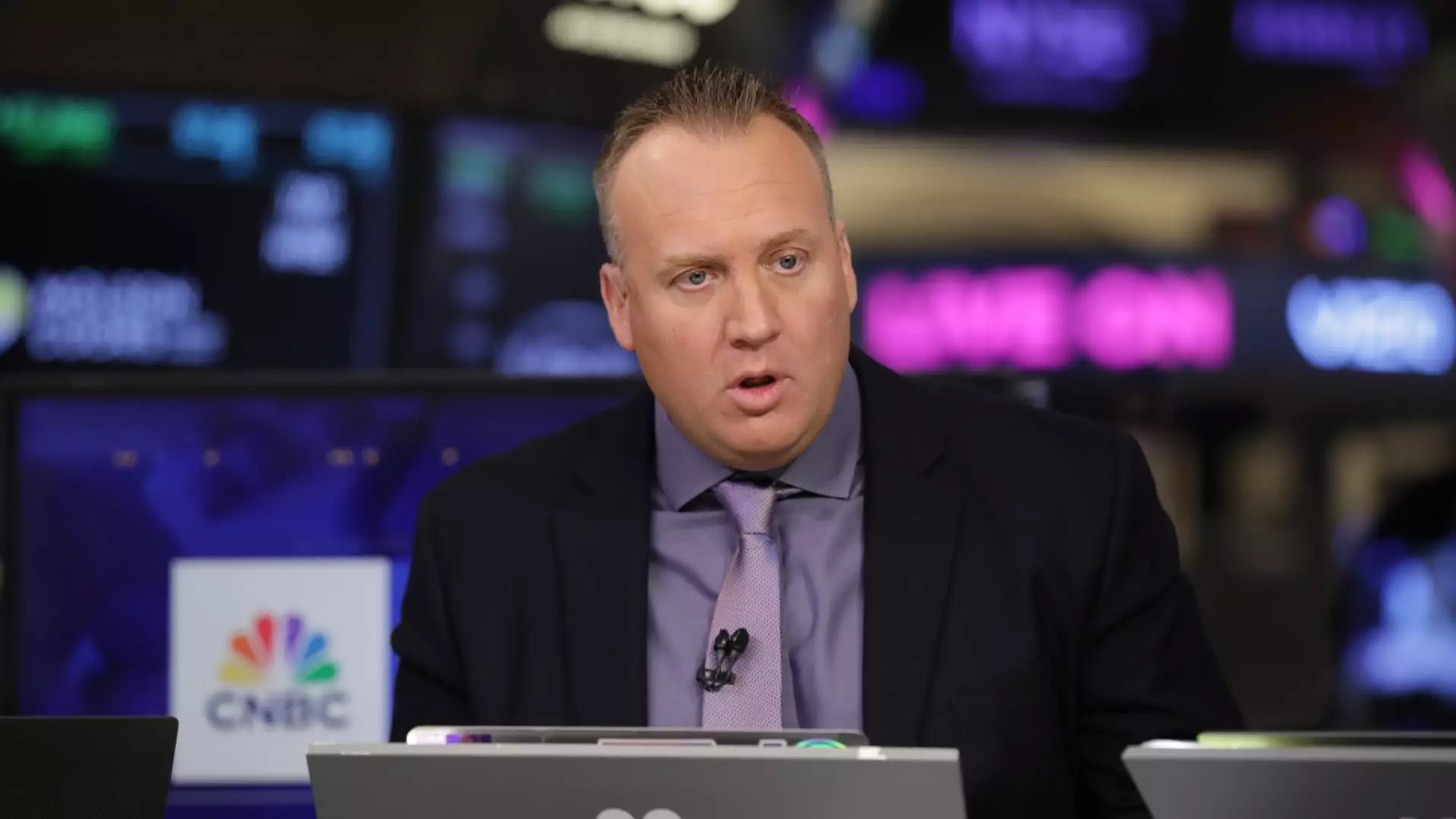Josh Brown, the CEO of Ritholtz Wealth Management, made waves with his recent revelation that Uber has become the cornerstone of his investment portfolio. This speaks volumes not only about his confidence in the ride-hailing giant but also about the seismic shifts occurring in the transportation sector. Brown argues that the ongoing advancements in autonomous driving will crucially redefine the market by eliminating the human driver—the most expensive part of ride-hailing services. In a climate where companies like Tesla and Waymo are racing to dominate the autonomous landscape, Uber’s strategic partnerships may just solidify its future success.
Brown’s assertion that Uber is “poised to benefit from robotaxi rollouts” is more than a casual observation; it is a powerful endorsement of how technology will reshape our daily lives. The integration of autonomous vehicles into Uber’s platform is akin to switching from horse-drawn carriages to automobiles in the early 20th century—an unstoppable wave of technological progress.
Stock Market Reactions: The Ripple Effect
Considering that Uber shares surged by over 8% following the availability of Waymo robotaxis to Uber users in Atlanta, it’s clear that investor sentiment is aligning with Brown’s perspective. The excitement surrounding these developments isn’t merely speculative; it reflects a growing recognition of Uber’s potential role in a drastically changed transportation ecosystem. People are not just hopping into autonomous cars; they are experiencing a paradigm shift that is set to redefine their understanding of public transport.
Brown notes, “The rollout of Uber and Waymo together in Atlanta is super important.” His emphasis suggests that the implications extend well beyond consumer convenience; they encompass economic fundamentals that could drive significant value for shareholders. Of course, in the world of finance, sentiment can be both a blessing and a curse. It raises crucial questions about sustainability—will this recent surge continue, or is it a classic example of a speculative bubble?
Poking Holes in Skepticism
Despite the overwhelmingly positive outlook from Brown, Uber’s stock still hovers below $100 a share, a complex reality that begs further scrutiny. How can a company with such promising partnerships and technology be undervalued? This discrepancy may stem from a broader market skepticism toward tech giants, particularly those trying to pivot from a human-centric model to an autonomous one. History is littered with instances where disruptive technologies took longer to materialize than initially anticipated, leading to investor disappointment.
But let’s challenge that skepticism. Uber’s adaptability in integrating autonomous technology could provide a definitive edge over its contemporaries. Brown’s insistence that he won’t cash in on profits anytime soon speaks to a level of conviction that contrasts sharply with market doubt. He perceives significant value where others may see uncertainty, and that perspective is vital for the next chapter of Uber’s story.
The Future of Partnerships: A Network of Opportunities
For Uber, the partnership with Waymo is just one part of a multifaceted business strategy. Brown believes that Uber’s ecosystem will thrive as it collaborates with various autonomous vehicle manufacturers, thus transforming its operations and significantly reducing costs. The potential for scaling this model is astronomical. Imagine a world where your morning commute is handled seamlessly by an autonomous vehicle: it’s safe, affordable, and efficient.
Additionally, as legacy companies struggle to adapt, agile firms like Uber could position themselves as leaders in this transformative landscape. Other players, such as Tesla, are striving to keep pace, but they may be limited by their own business models. Uber’s ability to adapt to partnerships rather than compete with every player is a significant advantage that could render its critics obsolete.
High Conviction, High Returns?
As Uber continues its ascent, it’s crucial to note the broader implications for individual investors. Brown’s endorsement should resonate with those who share a center-right perspective on capitalism: innovation drives growth, and strategic maneuvers are the lifeblood of success. Given the transformative potential of autonomous driving and Uber’s strategic positioning, this may well be the time to look past immediate stock price fluctuations and consider the longer-term trajectory.
Investors should be prepared for volatility, but Brown’s optimism serves as a powerful counterpoint to the naysaying often found in market discourse. Indeed, the future of Uber could pave the way not just for individual gains, but for a redefined economic landscape rooted in innovation and partnership—a bold outlook for the 21st century.

